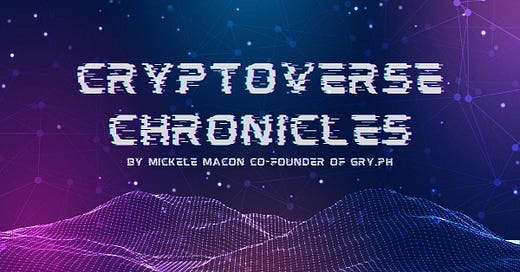CryptoVerse Chronicles - Episode 40
Stablecoin Milestones: PHPC Goes Live in the Philippines as USDC Expands to XRP Ledger
Introduction: Two Continents, One Stablecoin Surge
June 2025 is shaping up to be a milestone month for the global stablecoin ecosystem. As the Philippines celebrates PHPC’s graduation from regulatory testing to real-world use, the United States sees USDC, the world’s second-largest stablecoin, expand its reach to the XRP Ledger. Both moves highlight how digital currencies pegged to fiat are fast becoming the backbone of modern payments, commerce, and innovation.
PHPC: The Philippines’ Peso-Pegged Stablecoin Goes Mainstream
This week, Coins.ph announced that PHPC, its peso-pegged stablecoin, has officially exited the Bangko Sentral ng Pilipinas (BSP) regulatory sandbox. PHPC’s journey began in 2023, with real-world testing under close BSP oversight, focusing on robust compliance, consumer protection, and cybersecurity. Now, PHPC is ready for prime time, integrated fully across Coins.ph for payments, remittances, and merchant transactions.
Why is this so significant?
Regulatory Clarity: PHPC is the first Philippine stablecoin to earn full regulatory approval, providing a clear signal that digital assets, when compliant and transparent, are here to stay.
Financial Inclusion: For millions of Filipinos, PHPC could unlock faster and cheaper digital payments, especially for the unbanked and those reliant on remittances.
Regional Model: PHPC sets a precedent for other countries in Southeast Asia, demonstrating how local innovation can work hand-in-hand with central bank oversight.
USDC Launches on XRP Ledger: Stablecoins Cross Chains in the US
Meanwhile, across the Pacific, Circle’s USDC stablecoin just launched natively on the XRP Ledger (XRPL). This integration adds to USDC’s multi-chain presence, making it available on more than a dozen blockchains, from Ethereum and Solana to Avalanche and now XRPL.
Here’s why this matters:
Faster, Cheaper Payments: The XRP Ledger is famous for its speed and near-zero fees, making it an ideal backbone for stablecoin-powered payments, global remittances, and DeFi.
Growing Adoption: USDC on XRPL means more wallets, merchants, and payment platforms can use a trusted, regulated stablecoin, with full fiat backing and global reach.
Web3 Momentum: With stablecoins like PHPC and USDC gaining traction on local and global platforms, 2025 could be the tipping point for digital payments, commerce, and cross-chain finance.
The Big Picture: A Stablecoin-Driven Future
What connects these two headlines? They both reflect a global race to build faster, safer, and more inclusive payment systems using stablecoins, whether pegged to the peso or the dollar, built for local use or global commerce. As regulators in the Philippines and the US provide clearer frameworks, innovation is accelerating, and mainstream users are starting to benefit.
What’s Next?
Coins.ph will expand PHPC’s use cases and integrations, driving adoption across merchants, remittance partners, and digital finance apps.
XRPL developers can now build new apps and services leveraging USDC’s speed and interoperability.
Regulators worldwide are watching these developments, looking for models that balance compliance, innovation, and consumer protection.
Conclusion: The Stablecoin Revolution Is Global
From Manila to New York, regulated stablecoins are no longer just crypto experiments; they’re becoming the infrastructure for next-generation finance. As PHPC leaves the sandbox and USDC expands across chains, expect a wave of new products, partnerships, and opportunities for everyone in the CryptoVerse.
Call to Action:
Stay on top of these global developments, subscribe to CryptoVerse Chronicles, follow our GryphWeb3 Facebook Page, and share this episode to help grow our cross-border Web3 community!
Sources:





